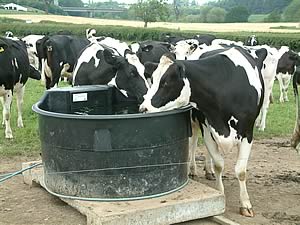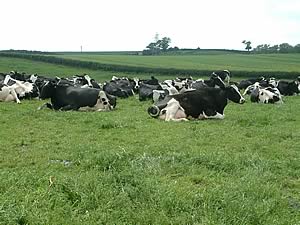 |
|||||||||
|
|||||||||||||||||||
|
|
Taking the Heat Out of Summer Can Boost Dairy Cow Returns Practical steps to help dairy cows overcome the often-underestimated challenge of heat stress could help boost herd performance even in relatively modest UK summer conditions, advises Alltech’s Neil Keane.
Daytime temperatures of 25ºC and above can be sufficient to depress intakes, restrict milk yields and reduce conception rates, he warns, and walking (to and from water troughs and milking) only serves to exacerbate the problem by increasing body temperatures further. Grazing management should ensure easy access to water and shade, whilst research has shown that the inclusion of the live yeast culture Yea-Sacc1026 in supplementary rations has a positive impact on intakes, milk yield and overall feed efficiency when cows are under mild heat stress, he says. “It is important to understand that the heat on cows’ backs whilst grazing can be substantially greater than officially recorded temperatures, as these are generally taken in the shade,” explains Neil Keane. “So there will be far more days at 25ºC plus for our cows than we might imagine and this is the threshold beyond which performance can be affected.
“Also, higher yielding cows are more susceptible to heat stress, which increases the overall impact on the herd. “Walking raises cows’ body temperatures under any conditions, and during the summer months this can become critical. A 600 metre walk, for example, will raise body temperature by 0.7ºC and, more importantly, it then takes two hours to return to normal. “Sensible practical measures should, therefore, include minimising distances that cows must walk by ensuring close proximity of water troughs and ensuring shade is never too far away. “Research on the effect of including Yea-Sacc was carried out when daytime temperatures ranged from 18ºC to 28ºC - so not excessive even by UK standards - yet the impact was to increase dry matter intakes, lift daily milk yields from 30.6 to 33 litres/cow and improve feed efficiency by almost 4%.”
|
||||||||||||||||||

|
|
||||||||||||||||||
| home | agri-services | pedigree
pen | news | dairy | beef | machinery BPS | property | organisations | site map |
|||||||||||||||||||



